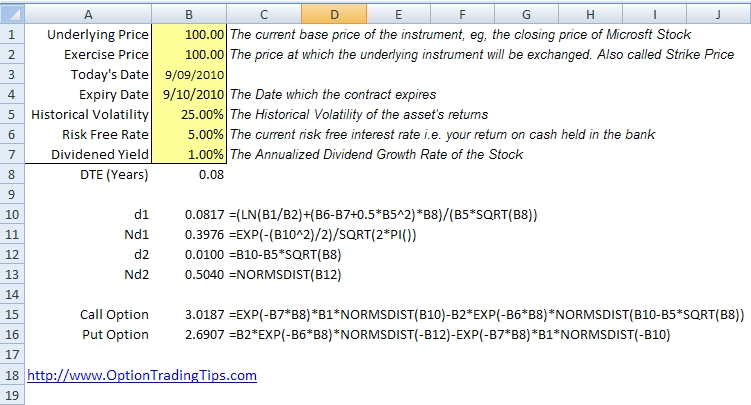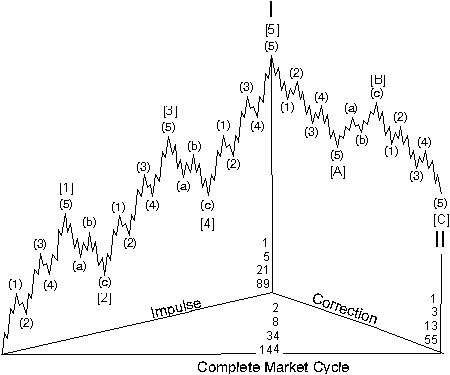

The Bullish Crab harmonic pattern also follows the Fibonacci ratios discussed earlier. This wave pattern also has four legs that look like M or W but are stretched. For the bullish Crab pattern, the XA leg is an up wave, which forms the first leg of this pattern. The chart patterns are usually categorized into two types, the continuous type and the reversal type.

It gets the identify from having one longer peak, forming the pinnacle, and two degree peaks on either side which create the shoulders. By learning to recognize patterns early on in buying and selling, you will be able to work out tips on how to profit from breakouts and reversals. I am a believer in technical evaluation and do really feel that chart patterns are a really powerful software. There are numerous patterns which fall into the “harmonic” group, but at present we will highlight one of many oldest acknowledged harmonic patterns – the Gartley sample.
Difference Between XABCD Patterns and Elliott Wave
One of the problems that I see is specifying the number of bars to be used when exploring for a pattern. Any suggestions or perhaps you could post an example of how you handled the exploration. Here you can find the meaning of Find the missing figure in the pattern.a)b)c)d)Correct answer is option ‘B’.
Whilst chart patterns certainly provide traders with a statistical advantage, they in no way guarantee a successful trade. When attempting to trade a bullish reversal on a stock that has been trending downward, you would oppositely approach the trade. You can see an example of a bullish reversal pattern in the section below.
What is an Xabcd pattern?
What is the XABCD Candlestick Pattern? Developed by Harold McKinley Gartley, the XABCD is a trend reversal pattern with five separate points (XABCD) and four legs (XA, AB, BC, and CD). The pattern can be a bullish pattern or a bearish pattern, and, in any matter, it indicates that the price action is about to reverse.
The updated code is nicer because if you want to display just the Bullish Gartley then all the unnecessary clutter is removed from the chart. Hi guys, I modernized Edakads code a bit to todays capabilities of Amibroker. This is a wonderful software engineering effort and my thanks go to the authors.
Only until it finds a P1 it will choose the last V1 prior to the P1 and the other V1’s disappear like snow on a hot day. 2) A bullish turning point occurs when there is a pattern with the lowest low in the middle and two higher lows on each side. 1) A bearish turning point occurs when there is a pattern with the highest high in the middle and two lower highs on each side. When you click in the D point, name of a pattern will be displayed. No need to find colleges in other sites, this is the best site in India to know about any colleges in India. Investments in securities market are subject to market risk, read all the related documents carefully before investing.
Complete Options Trading Course
But have you ever wondered how effective other, not yet known models could be? Don’t ask yourself the question anymore, it’s time to find out for yourself! You have the option to customize your own Patterns with the Backtesting tool and set Retracement Ratios and… Without exhausting my brains too much I just used the replay function of Amibroker and indeed this code repaints. So it finds a P1 or V1 initially but these peaks and troughs need to be confirmed. So initially it might draw a V1 trough and possibly another one and another one giving you 3 V1’s in a row.
How do I identify my Gartley pattern?
Identifying Gartley Patterns
The Gartley pattern above shows an uptrend from point 0 to point 1 with a price reversal at point 1. Using Fibonacci ratios, the retracement between point 0 and point 2 should be 61.8%. At point 2, the price reverses again toward point 3, which should be a 38.2% retracement from point 1.
@Capsule91, Thanks for a very comprehensive analysis of GSFC chart. I had entered at 125 and exited at 136 levels on the result day. This thread has given me a stimulus to sharpen my technical skills.
Also, such patterns provide the trader with nearly accurate entry, exit and stop-loss prices. Using Harmonic patterns have these advantages over market oscillator indicators. Bullish ABCD harmonic pattern appears on the market when the price is moving down and then you expect the market will reverse. The ABCD pattern works in the trending markets, but it can give false signals in the ranging markets. Traders often mistook the price highs and lows with the ABCD pattern without determining its validity.
From D the price may reverse and extend beyond 161.8% of XA. As in the earlier pattern, the Bearish Bat pattern is very much similar to the Bullish Bat pattern. The trader creates short trade or sells the stock at or near D. The Bullish Bat Harmonic pattern is a little different from the Gartley pattern. This pattern looks like the alphabet M, with the legs stretched out sideways.
This pattern is just like the above 5-point Gartley sample, however in reverse. Here the pattern is “W”-formed with “B” being the center of the pattern. The pattern shows commerce entry, stop and target ranges from “D” levels utilizing the “XA” leg.
Like the Gartley pattern, these patterns are designed to disclose when a pattern reversal is stronger than the unique trend. Using the triangles created throughout the butterfly, merchants can determine whether or not holding a short or a protracted place is the most profitable. These four levels on the chart are the 4 minimal targets of the bullish Gartley. That doesn’t imply that the bullish pattern will finish when the value completes level E. You are always free to use further price action guidelines or a trailing cease to attain further out exit factors in your commerce. Gartley discusses the Gartley sample and refers to it as “top-of-the-line trading opportunities” out there.
What Are Harmonic Patterns?
And so, the Gartley pattern can be sometimes known as Gartley 222 or the 222 pattern by some harmonic traders. If you’ll be able to learn to acknowledge these patterns early they’ll help you to gain an actual competitive advantage xabcd pattern in the markets. Most harmonic sample commerce entries happen round “D” level throughout the reversal zone. This capability to consistently repeat makes the Forex harmonic patterns engaging for our team at Trading Strategy Guides.
- When the CD transfer is finished and the worth creates a bearish bounce from the 161.eight% extension of BC, we verify the validity of a bearish Gartley Pattern.
- Once the price reaches , this is the optimal point to enter a short position.
- Similarly, point B should be the 0.618 retracement of drive 2.
- For traders who are planning to start with Harmonic trading, Gartley is quite simple and easy to understand the pattern.
- Harmonic patterns construct geometric pattern structures (retracement and projection swings/legs) using Fibonacci sequences.
In a bearish ABCD pattern, you would be looking for the price to rise initially from to a new high of the day . Aer the price reaches , you would be waiting for a dip back down to support . The support should be higher than the initial point .
That is the manual work which I have to undertake.. I routinely use harmonic patterns with software that permits checking for them manually quite rapidly but being able to scan is a big step forward. There are programs (e.g., MarketWarrior and eSignal) that have scanning capability but from what I have seen they also have other inherent problems. Known issues- Sometimes crab pattern’s D leg is going beyond maximum level allowed for D leg in parameters. These harmonic patterns should have a size and shape, this makes enough time to develop a pattern.
Find the missing number in the given number pattern.0, 4, 8?, 16, 20
Let’s explain the ABCD pattern, but before delving deep into the topic, let’s touch upon Fibonacci retracement, which lays the foundation of ABCD pattern. Technical analysts interpret these patterns in an attempt to predict future price movements. The basis of this belief is largely founded in human psychology and herd behavior. If you have ever had any interest in the financial markets, you have no doubt seen a price chart before. As the prices of securities fluctuate, past price data is recorded and can be observed on what we call price charts. For traders who are planning to start with Harmonic trading, Gartley is quite simple and easy to understand the pattern.
The Fibonacci ratio analysis helps to find important price junctures like key support and resistance levels, reversal, etc. Click here to signup and claim your 7-days free trial to the best harmonic pattern scanner. Each of the five points show an important low or high in terms of price on the chart. Thus, the four trading strategy previously mentioned legs represent different trends or price movements which move in opposite directions.
Harmonic chart patterns are thought-about harmonic because these structures have an integral relationship with the Fibonacci quantity sequence. Identified harmonic patterns conform to crucial Fibonacci levels. As you could already know, Fibonacci numbers could be seen throughout us in the natural world, and these harmonic ratios are also current throughout the monetary markets. Each sample offers a potential reversal zone , and never necessarily an exact worth.
What is ABCD pattern in a downtrend?
AB and CD tend to have approximately the same size. A bullish ABCD pattern follows a downtrend and means that a reversal to the upside is likely. A bearish ABCD pattern is formed after an uptrend and signals a potential bearish reversal at a certain level.
It is never guaranteed that the value will climb again, so selling at the correct point is paramount. If the value does begin to climb again, the investor can simply buy-in later in the hopes that this time the stock will reach the goal and turn profitable. Using this method removes the threat of heavy losses and case permitting offers the opportunity to recuperate those smaller losses and make a profit. ABCD harmonic pattern is the simplest one of all harmonic patterns because it has only two Fibonnaci ratios you must follow.
When Is An Abcd Pattern Bullish?
It is shown in the diagram containing both the patterns. These sets of Fibonacci ratios are used in pattern identification and in trading Harmonic geometric price patterns. There may be a continuous pattern in the consolidation phase which will help the market to continue the previous trend. Examples of such continuous patterns are the Symmetrical Triangle, the Cup and Handle, and the Flag. Some patterns give indications of a potential price reversal in the future. These patterns are Head and Shoulder, Double Bottom.

Therefore, we end up seeing the spike, followed by a healthy pullback. Price movements regularly deviate from potential trading patterns, and the security price may behave differently than the pattern may suggest. Traders should always remember to effectively manage their risk with stop-loss orders and proper capital allocation. Intense selling pressure leads to a sharp decrease in the security price , after which the price rises back up as more and more people begin to buy the dip .
In this figure C point is much below 0.816 retracement target, and yet it has been used by Carney for formation of ABCD structure. My advice to you would be that you need not be so strict in making harmonic patterns. Gartleys are patterns that include the basic ABCD pattern, Gartley chart patterns that lead to the double tops and double bottoms can be great areas for reversals in the market. Also, you can use Gartley in directional trades in the direction of the market.These patterns are used to help traders find good entry points to jump in on the overall trend. The bearish pattern begins with a strong upward move – initial spike , during which buyers are aggressively buying thus pushing the stock price to it high-of-day. Inevitably, buyers start to sell their shares in order to take profits.
Does harmonic patterns work?
Harmonic patterns are very profitable patterns with a success ratio of over 70%. The problem is that these patterns are rare and difficult to be identified, especially by non-professionals.

